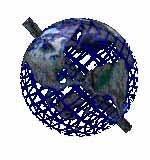

The cataclysmic pole shift hypothesis is a pseudo-science theory that there have been recent, geologically rapid shifts in the axis of rotation of Earth, causing calamities such as floods and tectonic events or relatively rapid climate changes. There is evidence of precession and changes in axial tilt, but this change is on much longer time-scales and does not involve relative motion of the spin axis with respect to the planet. However, in what is known as true polar wander, the solid Earth can rotate with respect to a fixed spin axis. Research shows that during the last 200 million years a total true polar wander of some 30° has occurred, but that no super-rapid shifts in the Earth's pole were found during this period.

EC: Edgar Cayce's readings were the first non-scientific publications of the twentieth century to bring the 'pole shift' concept into mass consciousness. Other authors have published books with similar theories, but their predictions, like Cayce's, did not happen on the designated dates because time is an illusion.

EC: Ellie Crystal: There are planetary pole shifts as well as pole shifts in consciousness.
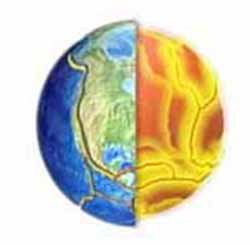

Charles Hapgood is now perhaps the best remembered early proponent of the hypothesis that some climate changes and ice ages could be explained by large 'sudden shifts' of the geographic poles. In his book "The Earth's Shifting Crust" (1958) (which includes a foreword by Albert Einstein), Hapgood speculated that accumulated polar ice mass destabilizes Earth's rotation, causing crustal displacement but not disturbing Earth's axial orientation.
Hapgood argued that shifts (of no more than 40 degrees) occurred about every 5,000 years, interrupting 20,000- to 30,000-year periods of polar stability. He cited recent North Pole locations in Hudson Bay (60°N, 73°W), the Atlantic Ocean between Iceland and Norway (72°N, 10°E) and the Yukon (63°N, 135°W).
However, in his subsequent work, "The Path of the Pole", (1970) Hapgood conceded Einstein's point that the weight of the polar ice is insufficient to cause polar shift. Instead, Hapgood concluded that causative forces must be located below the surface.
Theory of Crustal Displacement
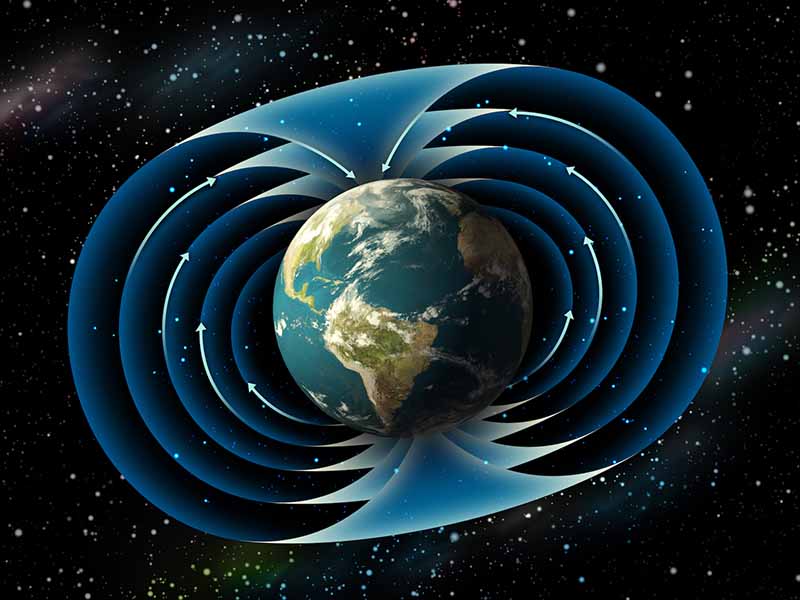
The geographic poles are defined by the points on the surface of Earth that are intersected by the axis of rotation. The pole shift hypothesis describes a change in location of these poles with respect to the underlying surface - a phenomenon distinct from the changes in axial orientation with respect to the plane of the ecliptic that are caused by precession and nutation, and is an amplified event of a true polar wander. Geologically, a surface shift separate from a planetary shift, enabled by earth's molten core.
Pole shift hypotheses are not connected with plate tectonics, the well-accepted geological theory that Earth's surface consists of solid plates which shift over a viscous, or semifluid asthenosphere; nor with continental drift, the corollary to plate tectonics which maintains that locations of the continents have moved slowly over the surface of Earth, resulting in the gradual emerging and breakup of continents and oceans over hundreds of millions of years. Pole shift hypotheses are not the same as geomagnetic reversal, the occasional reversal of Earth's magnetic field (effectively switching the north and south magnetic poles). Continue reading

Earth's Magnetic Field
Is Earth's Magnetic Field on The Verge of Flipping Over? An Expert Explains.

The Earth's magnetic field plays a big role in protecting people from hazardous radiation and geomagnetic activity that could affect satellite communication and the operation of power grids. And it moves.
Earth's magnetic field changes 10 times faster than once thought Live Science - July 8, 2020
Our planet's dynamic magnetic field can change direction far more quickly than scientists suspected. This bubble of magnetism holds our atmosphere in place and protects us from harmful cosmic radiation and solar winds. But a few times every million years, the field's polarity reverses and the magnetic North Pole and South Pole trade places. The last time this happened was about 780,000 years ago, and the process was previously estimated to take thousands of years, shifting at a rate of about one degree per year.
Scientists explain magnetic pole's wanderings BBC - May 7, 2020
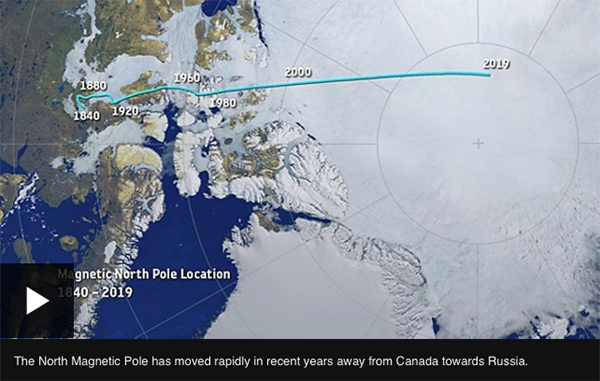
European scientists think they can now describe with confidence what's driving the drift of the North Magnetic Pole. It's shifted in recent years away from Canada towards Siberia. And this rapid movement has required more frequent updates to navigation systems, including those that operate the mapping functions in smartphones. A team, led from Leeds University, says the behavior is explained by the competition of two magnetic "blobs" on the edge of the Earth's outer core. Changes in the flow of molten material in the planet's interior have altered the strength of the above regions of negative magnetic flux.
Earth's Magnetic Pole Is Wandering, Lurching Toward Siberia Live Science - January 14, 2019
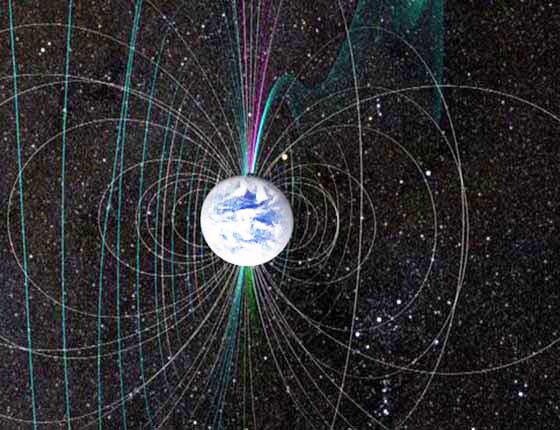
Earth's north magnetic pole is on the move, unpredictably lurching away from the Canadian Arctic and toward Siberia. It's wandered so much, that the current representation of the entire globe's magnetic field, just updated in 2015, is now out of date. And so, geologists have come up with a new model.
Scientists warn Earth's magnetic North Pole has begun moving 'erratically' at speeds so fast they are having to issue an emergency update to maps used by electronic navigation systems Daily Mail - January 11, 2019
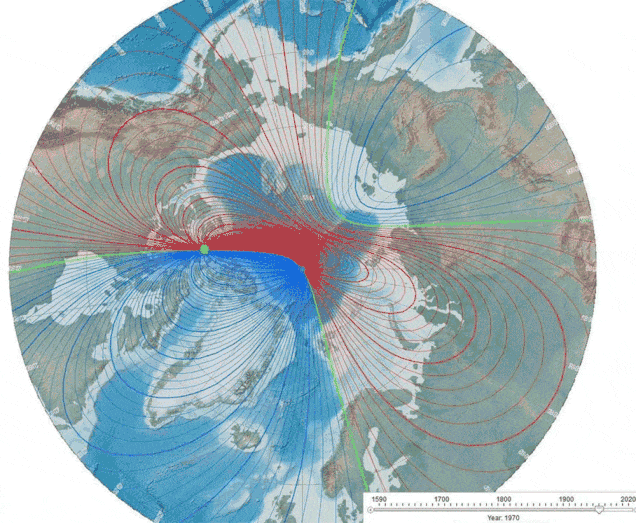
Earth's magnetic fields are shifting - and scientists are unsure why. Researchers say the magnetic North Pole is 'skittering' away from Canada, towards Siberia. The problem has got so bad, researchers around the world are scrambling to update a global model of the fields. Called the World Magnetic Model, it underlies all modern navigation, from the systems that steer ships at sea to Google Maps on smartphones.
Earth's magnetotail: First-ever views of elusive energy explosion Science Daily - November 15, 2018
Researchers have captured a difficult-to-view singular event involving 'magnetic reconnection' - the process by which sparse particles and energy around Earth collide producing a quick but mighty explosion - in the Earth's magnetotail, the magnetic environment that trails behind the planet.
Earth's magnetic field measured using artificial stars at 90 kilometers altitude PhysOrg - November 15, 2018
The mesosphere, at heights between 85 and 100 kilometers above the Earth's surface, contains a layer of atomic sodium. Astronomers use laser beams to create artificial stars, or laser guide stars (LGS), in this layer for improving the quality of astronomical observations. In 2011, researchers proposed that artificial guide stars could also be used to measure the Earth's magnetic field in the mesosphere. An international group of scientists has recently managed to do this with a high degree of precision. The technique may also help to identify magnetic structures in the solid Earth's lithosphere, to monitor space weather, and to measure electrical currents in the part of the atmosphere called ionosphere.
Scientists develop a new way to remotely measure Earth's magnetic field PhysOrg - October 4, 2018
Researchers in Canada, the United States and Europe have developed a new way to remotely measure Earth's magnetic field—by zapping a layer of sodium atoms floating 100 kilometres above the planet with lasers on the ground. The technique not only measures magnetic field strength at an altitude that has traditionally been hidden, it has the side benefit of providing new information on space weather and atomic processes occurring in the region.
Earth's Magnetic Field Can Reverse Poles Ridiculously Quickly, Study Suggests Live Science - August 23, 2018
Like the invisible force shield around the Death Star, Earth's magnetic field surrounds and protects our planet from the hottest, most statically charged particles the sun can throw our way. This shield - the natural product of molten iron swirling around the planet's core - has had our backs for billions of years, and prevented Earth from becoming an irradiated, electrified wasteland. Every now and then, though, that shield lets down its guard. A few times every million years or so, Earth's magnetic field reverses polarity. Imagine a giant bar magnet inside our planet got flipped upside down; iron molecules in Earth's outer core would switch direction, the magnetic North Pole would become the magnetic South Pole, and the invisible currents of energy that make up our planet's magnetic armor would tangle and break, potentially reducing the shield's protective strength by up to 90 percent, previous studied have suggested. Luckily, full reversals are uncommon and unfold slowly over thousands of years. (The last full reversal occurred about 780,000 years ago.) But according to a new study partial or temporary shifts in Earth's magnetic poles can occur much, much faster than was previously thought possible - potentially, within a single human lifetime.
Earth's Magnetic Field Is Drifting Westward, and Nobody Knows Why Live Science - May 16, 2018
Over the 400 years or so that humans have been measuring Earth's magnetic field, it has drifted inexorably to the west. Now, a new hypothesis suggests that weird waves in Earth's outer core may cause this drift. Over the 400 years or so that humans have been measuring Earth's magnetic field, it has drifted inexorably to the west. Now, a new hypothesis suggests that weird waves in Earth's outer core may cause this drift. The slow waves, called Rossby waves, arise in rotating fluids. They're also known as "planetary waves," and they're found in many large, rotating bodies, including on Earth in the oceans and atmosphere and on Jupiter and the sun. The slow waves, called Rossby waves, arise in rotating fluids. They're also known as "planetary waves," and they're found in many large, rotating bodies, including on Earth in the oceans and atmosphere and on Jupiter and the sun.
Earth's magnetic poles could be about to FLIP: Experts warn the reversal could cause widespread blackouts and make parts of the world 'uninhabitable Daily Mail - January 31, 2018
The Earth has a fierce molten core that generates a magnetic field capable of defending our planet against devastating solar winds. The protective field extends thousands of miles into space and its magnetism affects everything from auroras to power grids. But this field, so important to life on Earth, has weakened by around 15 per cent over the last 200 years. And this, scientists claim, could be a sign that the Earth's poles are about to flip.
Earth's magnetic field could flip within a human lifetime Science Daily - October 14, 2014
Earth's last magnetic reversal took place 786,000 years ago and happened very quickly, in less than 100 years -- roughly a human lifetime. The rapid flip, much faster than the thousands of years most geologists thought, comes as new measurements show the planet's magnetic field is weakening 10 times faster than normal and could drop to zero in a few thousand years.
What If Earth's Magnetic Poles Flip? Live Science - February 15, 2012
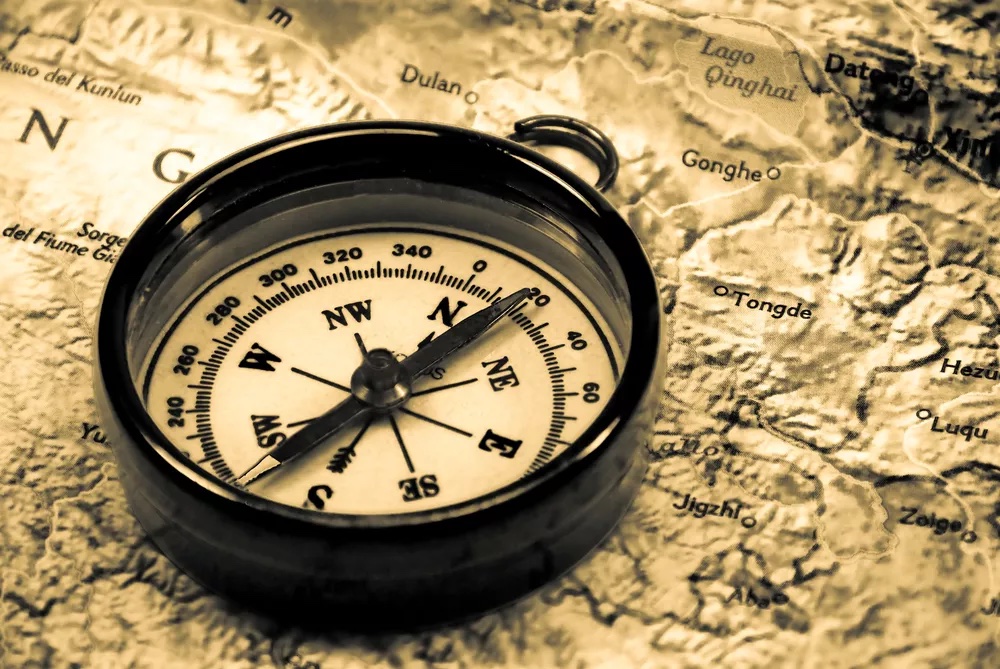
The end of the world as we know it could come in any number of ways, depending on who you ask. Some people believe global cataclysm will occur when Earth's magnetic poles reverse. When north goes south, they say, the continents will lurch in one direction or the other, triggering massive earthquakes, rapid climate change and species extinctions. The geologic record shows that hundreds of pole reversals have occurred throughout Earth's history; they happen when patches of iron atoms in Earth's liquid outer core become reverse-aligned, like tiny magnets oriented in the opposite direction from those around them. When the reversed patches grow to the point that they dominate the rest of the core, Earth's overall magnetic field flips. The last reversal happened 780,000 years ago during the Stone Age, and indeed there's evidence to suggest the planet may be in the early stages of a pole reversal right now.
2012: Magnetic pole reversal happens all the (geologic) time PhysOrg - November 30, 2011
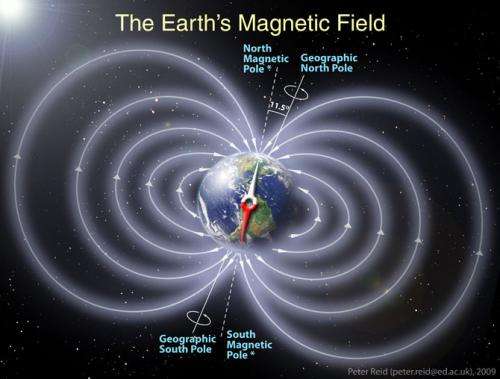
Scientists understand that Earth's magnetic field has flipped its polarity many times over the millennia. In other words, if you were alive about 800,000 years ago, and facing what we call north with a magnetic compass in your hand, the needle would point to 'south.' This is because a magnetic compass is calibrated based on Earth's poles. The N-S markings of a compass would be 180 degrees wrong if the polarity of today's magnetic field were reversed. Many doomsday theorists have tried to take this natural geological occurrence and suggest it could lead to Earth's destruction. But would there be any dramatic effects? The answer, from the geologic and fossil records we have from hundreds of past magnetic polarity reversals, seems to be 'no.'
Earth's Magnetic Pole Moves, Throws Off Planes in Florida Live Science - January 7, 2011
Earth's magnetic pole is shifting south and apparently it's affecting planes at Tampa International Airport in Florida. Currently the planet's northern pole is moving slowly south. "The Earth's poles are changing constantly, and when they change more than three degrees, that can affect runway numbering," FAA spokesperson Kathleen Bergen told FoxNews. Earth's magnetic field is thought to be generated deep inside the planet. An inner core of solid iron is surrounded by an outer core of molten iron. They rotate at different rates, and the interaction between the regions creates what scientists call a "hydromagnetic dynamo." It's something like an electric motor, and it generates a magnetic field akin to a giant bar magnet.
The process is not completely understood. In fact, one study suggests the planet's mantle, which surrounds the core, also plays a role. The poles are always in flux. Since runway designations and other charting rely on such geomagnetic information, as the poles slide one way or another, adjustments have to be made. And every so often, the field all-together flips on its head, turning the magnetic North Pole into the South Pole and vice versa. It last happened 780,000 years ago, and is predicted to occur again in about 1,500 years, but that's a big "maybe." The overall frequency is hard to predict - there was one period in Earth's history when the field didn't reverse for 30 million years. The flip doesn't happen in a pinch, though. Studies have suggested anywhere from 1,000 to 28,000 years are required to initiate and complete a reversal.